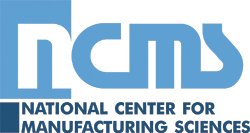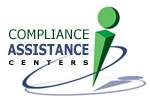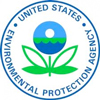Historical Article
HEALTH AND INDUSTRIAL HAZARDS
IN THE PLATING INDUSTRY
REUEL C. STRATTON
Supervising Chemical Engineer,
The Travelers Insurance Company, Hartford, Conn.
THE STRIDES which safety was made in industry in general has by no means skipped the electroplating industry. The plating plant today is not overlooked by the safety engineer or the industrial hygienist, nor is it considered an exceptionally hazardous place to work provided the basic fundamentals which control the hazardous operation of any particular process are followed generally. The electrodeposition of metals today is in principle little different than the similar deposition of the same metal years ago, although there have been improvements in plating solutions and techniques. The introduction of continuous plating machines and much of the other mechanical improvement in the electroplating industry have brought with them commensurate safety.
This subject may be logically divided into two parts. The hazards which cause industrial accidents are one part, while the hazards to health or the hazards involving industrial hygiene are a second part. While there is certain overlapping of control, it would appear preferable in this short discussion to consider the items separately.
Prevention of Injury
The prevention of injuries in an electroplating establishment or in the electroplating department of a plant calls for the same effort ill the promulgation and operation of an industrial safety program as in any other branch of industry. Safeguards adequate for the exposure and operating safety rules are a necessity, and the workmen ill an electroplating department should utilize such safeguards and observe all safety rules of the plant the same as the workers in any other department.
Just why electroplating for many years has been, in general, considered a potentially hazardous industry, although in reality it is no more hazardous than many other industries is not known. In all probability, this opinion has been generated because of the imposing array of hazards based chiefly on chemical terms presented in any discussion of the industry. It is indeed unfortunate that most plants do not separate their accident records and segregate the plating department. One would venture the opinion that if it were possible to segregate the injury records of a plating establishment from those of the remainder of the plant it would be found that the usual run-of-the-mill accidents are just as prevalent in tile plating department as elsewhere.
In attempting to differentiate the contract plating establishment from the plating department operated as an adjunct to a manufacturing plant, this writer has been unable to secure any specific, clearly defined accident data to show any difference, operation for operation.
There are a few hazards peculiar to the plating industry which should be recognized and controlled. Obviously, plating work is wet work. Wet places produce slippery floors, with accompanying falls of persons. Damp atmospheres are conducive to certain industrial-hygiene hazards and at tile same time increase the need for continuous mechanical maintenance within the department. The hazard of lifting is increased too. While this discussion is not intended to deal with every detail of the problem, because each plant is a little different from the other, yet there are certain simple principles which must be observed generally. These principles are (a) the provision of proper plating equipment, (b) tile correct installation of all such equipment, (e) the provision of proper personal protective equipment and safety devices, and (d) the establishment of an effective accident-control program, directed through an interested management but with the responsibility for safety never pushed down so far below top management that interest becomes lost until some serious or unusual accident occurs. Management has found that it pays dividends to furnish good and proper equipment, good tools, a good plant, and then to provide capable supervision to make certain that the plant and its equipment are used in the manner intended. This is generally brought about through a well organized cooperative safety program, which is adequate but not elaborate and through which employees may be trained and educated to the realization that they have a very definite responsibility and obligation for their own safety and their own health, as well as that of their fellow workers.
Other than the usual hazards of traumatic, or bodily, injuries, many of which are heightened by the wet conditions of the usual plating room, there is the particular exposure caused through the storage of large quantities of materials necessary for carrying on the work. It is important that adequate storage space be supplied, not only for raw materials used in the plating, such as metals and chemicals, but also for the large quantities of parts which are "in line" for the plating operation. Almost 25 per cent of all compensation cases in the industry occur in the handling of materials or tools. About 20 per cent of all injuries are caused by falls, and another high percentage is caused by falling objects striking workers. Recently it was determined that falling objects and falls accounted for 34 per cent of all fatal cases in all industry while falls, being struck by falling objects, and handling of material accounted for 45 per cent of all permanent partial disabilities and the same causes accounted for 55 per cent of the minor injuries. The hazards which cause such injuries are always present in every electroplating establishment, but they can be corrected easily by application of the necessary control measures.
While there is some hazard from the exposure to electric current and the possibility of contact with electric-current-carrying equipment, injuries from such exposures have not been too prevalent. However, it should be remembered that all electric equipment should be protected, guarded where necessary, and, above all, installed according to the requirements of the National Electrical Code. Haphazard wiring, the use of improper extension cords, the failure to ground equipment properly, and other similar bad practices should not be permitted.
PREVENTION OF HEALTH HAZARDS
Turning now to the health hazards of the electro-plating industry, there are many chemicals used which are well recognized as being toxic. The effects of such toxic materials on the human body may be classed as (a) local and (b) systemic. The so-called local effects include skin irritations, eye injuries, and burns. Of these, the skin irritations are, as is well known, most frequent. Systemic effects may be created through absorption of toxic material through the akin. by inhalation into the lungs and from there into the body, or by ingestion through eating of contaminated food or contamination of other objects which may be placed in the mouth.
An industrial-hygiene exposure occurs in the operations prior to actual plating. If the grinding, polishing and buffing department is counted as a part of the electroplating plant, one must consider the respiratory hazard created through the breathing of air containing silica particles. This exposure is usually not too important in the plating industry, because today most of these operations make use of synthetic abrasives which are less hazardous. Improved exhaust ventilation too has been most effective in protecting against dust hazards.
Degreasing and wet cleaning of metal parts may involve exposure to such materials as trichloroethylene, benzol, gasoline, carbon tetrachloride, etc. All chlorinated solvents are hazardous, and the vapors of such solvents do cause irritation to the eyes, nose, throat, and lungs. The exposure of the skin to such liquids may create a substantial dermatitis and also may cause systemic response through the absorption of the material into the body.
Many of the chemicals used in the plating industry are substantially poisonous and may produce a serious health hazard. For example, such metal was as lead, cadmium, and gold, and cyanides, sulfides, and other anions may be extremely toxic. Because these chemicals insure good electrodeposition, they must be employed by the industry; but such employment makes it necessary that the greatest care be exercised in order that commensurate health protection goes along with their use. The environment in some electroplating plating tends to enhance toxic reactions. The factors of dampness, heat, and inadequate ventilation may affect the physical condition of the body and make absorption that much more easy. Certain metallic compounds show marked toxicities for persons who perspire excessively. Dampness will naturally tend to hold the salts in a more active state upon the skin. Of the great number of materials which are used in the plating industry only one or two will be touched upon as providing a pattern for the control of others. The manner in which chromic acid is used makes it readily available as a hazardous material on inhalation, contact, or ingestion. Chrome burns, chrome ulcers, and chrome holes, as well as other skin effects, particularly at the base of the nails, have been recognized for long periods of time. Chromic acid is especially dangerous in concentrated solution. Accidental ingestion of chromium, or chromates, requires prompt treatment. However, when chromium plating was first introduced and the hazards became known, industrial steps were taken to eliminate the hazard. This was done first by improved and increased ventilation, particularly the lateral type of ventilation at the disengaging surface of the liquid, and later by the use of styrene rods or beads on the surface of the liquid in the tank. The effectiveness of this latter protective measure was proven recently by a New York State survey, wherein it was observed through actual sampling that the concentration of chromic acid mist decreased continuously with all increase in thickness of the bead layer. While it was not possible to eliminate the need for ventilation entirely, yet it was found that the ventilation requirements could be materially reduced with a commensurate saving in power cost.
Exposure to cyanides, particularly to hydrocyanic gas which may be accidentally created through tile mixing of a cyanide and all acid, should be controlled in all plants. Exposure to such materials may result in very rapid acute poisoning cases, usually fatal in result.
Much has been done to control industrial exposures through the installation of automatic-machine plating whereby the operators are exposed much less than previously.
Fortunately, the toxicity of most materials used by tile plating industry is well known and, therefore, the amount permitted to gain access to tile air of the workroom can be collected, analyzed, and controlled.
Admitting that specific hazards exist in an electro-plating establishment, what may be done to control them? Obviously, tile control varies with the establishment, and no arbitrary rule or code can be prescribed. Certain basic principles are commonly utilized and include (a) substitution of harmless or comparatively harmless materials for dangerous ones, (b) isolation or mechanical guarding of harmful processes, (c) provision of local exhaust ventilation to prevent toxic materials from reaching the breathing level (d) provision and use of personal protective devices, and (e) provision and use of personal hygienic measures, such as frequent washing, bathing, and the use of proper work clothing.
RECOMMENDATIONS BY NATIONAL SAFETY COUNCIL
A resume of the required precautions is abstracted from an industrial data sheet provided by the National Safety Council. Tile precautions suggested, while general in nature, do provide the basis upon which an individual plant program may be built. These include:
(a) The floors of electroplating rooms should be smooth, water tight, preferably of a plastic asphalt compound, and should slope to a central drain where spilled liquids may be collected or neutralized before they pass to the sewer.
(b) Containers in which toxic supplies are kept should be plainly marked and stored separately.
(c) All electroplating rooms should be equipped with an efficient exhaust-ventilation system. This includes not only required general exhaust but also the individual tank exhaust needed for specific electro-plating operations, such as chromium.
(d) The storage of food, or the eating of food, should not be permitted in electroplating rooms or in the places where electroplating chemicals are used or stored.
(e) Adequate washing facilities should be provided in conjunction with electroplating rooms or nearby, and each employee should be encouraged and possibly required to use such facilities before leaving the Plant or before partaking of food. Workers would be cautioned to use plenty of water to wash away immediately any contamination which may have come in contact with the skin. A special type of fountain should be provided for the cleansing of eyes that may have been affected.
(f) It is especially important that workers wear correct safety clothing. Rubber boots, gloves, aprons and coats, acid hoods or splashproof goggles or both, woolen shirts and trousers, and other types of personal protective equipment should be supplied or made available. There are certain clothing tips for maximum safety. A broad brimmed hat to protect the face and neck against possible dripping of chemicals from overhead is valuable. Collars should be kept closely buttoned and tile gloves should be tucked under the sleeves, while the trouser leg should be worn outside tile boots. It is important that splashproof goggles should be worn on all jobs where there is a definite chemical hazard to tile eyes.
(g) Tile foregoing are chiefly preventive measures, but equally important is the availability of first aid and medical care when an injury or an ailment has been suffered. Skin infections, the most common hazard in tile electroplating industry, are not usually so urgent as to make first aid immediately necessary, other than immediate and copious washing. However a neutralizing agent should not be used except upon a physicians advice. Most important is to have medical care available. It Should be borne in mind · that treatment afterwards is "locking the barn door after the horse has been stolen". For the good of the worker and for the betterment of the industry, a real medical program of prevention is essential. Such a program should obviously be developed under the guidance of a medical consultant thoroughly familiar with the possible exposures in the electroplating industry and should be coupled with pre-placement examination of applicants for work, as well as regular physical examinations, to make certain that no physiological response from any of tile chemical or processes is likely to develop to a point where harm may result.
HAZARDS OUTSIDE THE PLANT
It would be remiss not to mention the need for extending safety measures beyond the confines of the plant. With the present trend to legislate the control of the effluent from industrial plants, both gaseous and liquid, it has become increasingly important, in fact imperative, that due consideration be given to exposures involving the public or the property of others. The courts have shown a growing tendency to hold industrial plants responsible for damage occurring off the premises, where the source of the damage can be traced to the effluents from the industrial plant.
Recently, an episode occurred where some 300 automobiles were spotted by droplets emanating from an exhaust system. Claims are frequently made for damage to gardens, truck farms, trees, and other like items. Whether fictitious or otherwise the damage may be difficult to defend. The only safe procedure is to make positive that the ventilation system is properly designed and engineered and that the air stream emanating from it di~ehoxgc3 to a safe place or passes through a suitable filter or collector so that contaminants or collected material cannot go beyond a safe place or beyond the premises of the plant.
Stream pollution is receiving important civic consideration. The wastes or rinses from cyanide baths and other plating or highly alkaline wash solutions which may contain substantial amounts of suspended solids, chemicals, and oils or greases must be controlled. Such liquid effluents must be treated or neutralized before discharge to a local sewer, a storm drain, or open stream or other points. Fortunately, cyanide and other plating wastes are relatively easy to treat safely. Excellent results have been obtained in most waste-cyanide treating installations, and no difficulty has been experienced in the handling of treated wastes by local sewage-treatment plants or in local discharge to streams or other beds. However, it is important that complete records of operation be kept, including interim tests, so that they may be submitted to local authorities as evidence of intent if any question of pollution above permissible quantities should arise.
CONCLUSION
It is considered safe to state that the electroplating industry has not been singled out as an industry more hazardous than the average of like operations. The injuries which do occur to workers in the electroplating industry are subject to control. The exposure to toxic materials and to industrial disease, while existing, can likewise be controlled.
Control of the exposures in the electroplating industry can be brought about through provision of (a) good equipment and good operating conditions, (b) good housekeeping, and (c) an adequate managerial safety program which will make all workers partners with supervision in the prevention of injuries and occupational disease.
The exposure conditions are controllable; the means for control are handy and well known; the initiative and the continuous application of a control program is the only essential often found lacking.
 |
 |
 |
 |
 |
| Home | Subscribe | Regulations | Compliance Assistance | News | Resources | Resource Locators | Directories | Online Training | About | Search | NASF.org |
The information contained in this site is provided for your review and convenience. It
is not intended to provide legal advice with respect to any federal, state, or local regulation.
You should consult with legal counsel and appropriate authorities before interpreting any
regulations or undertaking any specific course of action.
Please note that many of the regulatory discussions on STERC refer to federal
regulations. In many cases, states or local governments have promulgated relevant rules and
standards
that are different and/or more stringent than the federal regulations. Therefore, to assure full
compliance, you should investigate and comply with all applicable federal, state and local
regulations.

